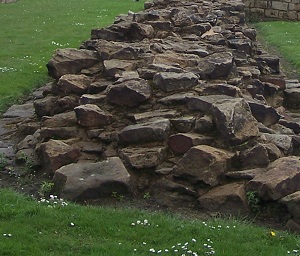For those of you who have read much of my writing on the subject, you’ll recall that I generally recommend working with index investments when we have them available. In this article I will do my best to help you understand some of the reasons why I recommend index investing.
What is Index Investing?
In order to understand why index investing is a good option, I need to explain first what I mean by an index. In general, an index investment is a representative investment covering a market, sector, or asset class. The S&P 500 is an index for example, representing the asset class of the 500 largest publicly-traded companies in the US marketplace. The Vanguard Total Market Index is an index that represents the entire spectrum of domestic (US) publicly-traded companies. There are many other examples, including the Lehman Brothers Aggregate Bond Market Index (all publicly-traded bonds in the US marketplace). The Morgan Stanley Capital International (MSCI) Europe, Australasia, and Far East (EAFE) index represents the entire markets of the following countries: Australia, Austria, Belgium, Denmark, Finland, France, Germany, Greece, Hong Kong, Ireland, Italy, Japan, The Netherlands, New Zealand, Norway, Portugal, Singapore, Spain, Sweden, Switzerland, and the United Kingdom. Since these indexes represent an entire marketplace, they are often used as the benchmark against which managed (non-index) funds are measured.

Photo credit: steelo
There are mutual funds and exchange-traded funds that track these various indexes. If you’ll recall, one of the first tenets of successful investing is to diversify – don’t put all of your eggs in one basket. By investing in one of these indexes, the investor is taking an ownership stake in all of those companies at once. What a great, simple way to diversify!
These indexes do not require a professional manager to oversee them, because they represent an entire marketplace. The makeup of the index only changes by an outside force (S&P replacing one company in the 500 with another, for example). Because of this, there is very little overhead (fees and expenses) to reduce your return within index investing. Also, since we aren’t changing investments by selling a company’s stock that is out of favor and buying one that we think might provide better returns in the future, transaction costs are limited, and excess taxation of capital gains is limited as well.
What Are Managed Investments?
On the other side of the coin from Index Investments is the group of mutual funds called Managed Investments. These are investment vehicles where a manager (or team of managers) chooses a group of companies (stocks or bonds) to invest in. Over time, this group of investments must be monitored to ensure that the individual companies are producing the expected results. If a company appears to be underperforming or has changed intrinsically, that stock is sold and another company is chosen to replace it in the fund. All of this analysis requires lots and lots of research, review, and day-to-day management. That management costs a lot of money – often upwards of 1% of the fund’s holdings each year – as opposed to less than ¼% for many index funds.
 The idea is that the professional management team is a bunch of very smart guys and gals, and being very smart guys and gals, they can potentially get you a better return than you could get by just buying an index fund. Care to guess how often that happens, consistently? Less than 5% of the time, according to records, and that doesn’t include all of the funds that are eliminated or merged due to underperformance.
The idea is that the professional management team is a bunch of very smart guys and gals, and being very smart guys and gals, they can potentially get you a better return than you could get by just buying an index fund. Care to guess how often that happens, consistently? Less than 5% of the time, according to records, and that doesn’t include all of the funds that are eliminated or merged due to underperformance.
So – the first “wrong” with investing in managed mutual funds is that you’re taking a chance that your chosen smart guys and gals (the managers of the fund you’ve chosen) will happen to be in that top 5% that beats the index investment. And you’re paying something like four times (or more) in expenses to get there. But people still love a gamble, and so managed funds remain very popular. But why?
Under The Covers
Let’s take a look at why some managed mutual funds appear to be a good gamble.
Mutual fund companies introduce lots of funds every year. As an example let’s say a fund company introduces ten new funds in the year. Each fund has a fair-haired boy (or girl) managing the fund, and the manager does his or her level best to produce a good return. For the most part, since these funds haven’t been marketed to the public much, the fund company puts some of their own money in the fund; this is called “incubation”, it’s a way for a fledgling fund to build a track record before investment of a lot of money in marketing. At the end of the year, nine of the ten new funds have poorly underperformed, but one of the funds outperformed the indexes by a wide margin – let’s say it’s by more than 20%.
The nine poor-performing funds’ monies are merged with the one winner fund (or some other fund), bolstering it’s asset size, and the marketing begins. Investors hoping for that “one in a million” investment are drawn to this new fair-haired investment manager because of the fantastic return that his or her guidance produced in the past year. Now is when it gets interesting…
The Interesting Part
I mentioned before about how less than 5% of all mutual funds consistently outperform the entire market index. That’s because it is very difficult to individually pick and choose 50 or 100 companies that will do better than the market (or index). The entire market has a track record of increasing in value over 80% of the time, year in and year out. Imagine trimming that 10,000+ group of investment choices to a manageable group of 50 to 100 stocks (or bonds) that will do better than everyone else! It’s very, very, difficult, indeed – and most managers do not do this – and certainly not consistently year after year.
So, what happens is that after the fund has had it’s initial “home run” season, where it outperformed the market by 20% or more, is that the fund attracts all kinds of attention and investors. In the second year, lots more money pours into the fund after the aggressive marketing, and the manager does his or her best to reproduce the result from the previous year. Amazingly enough, maybe she does it, but this time only by about 2% overall – and the expense ratio of the fund eats one percent right away. But look at her track record: over the span of two years, she’s outperformed the index by an average of 11%! Why would you NOT invest in this fund??
After the second year where the manager just squeaked out a positive result, not wanting to lose investors’ funds, she becomes more conservative. Now she begins to more closely track the index against which her fund is compared, rather than whatever magic was used to produce the first year’s stellar results. At the end of this year, the fund doesn’t quite meet the index’s return, but it’s pretty close (until you take out the additional 1% of expenses). But again, the marketing points out that, over a three-year period, this manager has outperformed the index by almost 7%. Again – you’d be a dummy to not invest with that kind of result, right?
And so it goes… eventually this fund’s returns each year are always coming up just short of the index, and after a good run of five years, the fund is folded into the next best thing. Lather, rinse, repeat…
Backing Data
I wanted to give you some additional data on the above activity, so I ran some screens using readily available tools (like Yahoo! Finance, Morningstar, etc.). The results were quite interesting: on one screener I looked for mutual funds that performed in the top 20% in each of the previous five years, and 3 funds were the result, one of which was an index fund.
So next, I looked at all funds created during calendar year 2013, and took their rankings for 2014, 2015, 2016, 2017 and 2018. Not one of the funds that was in the top 20% for 2014 repeated for all five years, and only a very small percentage of that top 20% ever showed up again in the top 20% for the succeeding four years.
Of course this isn’t definitive research and it doesn’t prove anything conclusively. I’ve found it doesn’t pay off to spend too much time checking these things out, because the result remains the same.
One other item that was not factored in is called survivorship bias. This is the phenomenon that occurs because only the surviving funds, those that had good performance, are available for result comparison in subsequent years. From our example above, nine of the ten new funds created by our fictitious mutual fund company were shut down after the first year. So now, being non-existent, the poor results that those funds brought forth are not included in any screening reports, making the results (of only the surviving funds) look much better overall.
Bottom Line
At any rate, I wanted to provide you with this explanation of yet another problem seen in the investing world. I think it can best be summed up by comparing investing with gambling at a casino. Everyone knows that gambling odds are always in favor of the “house”. The individual gambler might hit it big once in a blue moon, but in general the gambler pretty much always comes out on the short end. On the other hand, with the odds in the favor of the casino, owning a casino (or casino stock) might be a pretty good way to make a lot of money.
In the investing world, it pays off to own the “casino” – that is, to own the entire marketplace – instead of playing the games of managed mutual funds. Owning the marketplace (via index investing) gives you the benefit of an 80% opportunity for an increase in your holding each and every year, for a very low expense ratio.
 Many individuals are offered an employer-sponsored savings plan though work such as a 401(k) or 403(b). Employers who offer these plans may provide a company match. This means that the employer will add money to the employee’s account, if the employee saves a certain percentage of income. Some employers will even provide money even if the employee is not saving.
Many individuals are offered an employer-sponsored savings plan though work such as a 401(k) or 403(b). Employers who offer these plans may provide a company match. This means that the employer will add money to the employee’s account, if the employee saves a certain percentage of income. Some employers will even provide money even if the employee is not saving.
 If you’re nearing age 65, there’s something you need to know: unless you’re currently receiving Social Security benefits (having filed early), you need to take action to make sure you receive your Medicare benefits in a timely fashion.
If you’re nearing age 65, there’s something you need to know: unless you’re currently receiving Social Security benefits (having filed early), you need to take action to make sure you receive your Medicare benefits in a timely fashion. There are some great benefits to be had from converting funds from a traditional IRA or a 401k to a Roth IRA. But that doesn’t mean that everyone within earshot should just willy-nilly go off and convert their IRAs to Roth IRAs. One factor that many folks likely haven’t thought about is integrating Roth IRA with Social Security to reduce taxes.
There are some great benefits to be had from converting funds from a traditional IRA or a 401k to a Roth IRA. But that doesn’t mean that everyone within earshot should just willy-nilly go off and convert their IRAs to Roth IRAs. One factor that many folks likely haven’t thought about is integrating Roth IRA with Social Security to reduce taxes.





 The idea is that the professional management team is a bunch of very smart guys and gals, and being very smart guys and gals, they can potentially get you a better return than you could get by just buying an index fund. Care to guess how often that happens, consistently? Less than 5% of the time, according to records, and that doesn’t include all of the funds that are eliminated or merged due to underperformance.
The idea is that the professional management team is a bunch of very smart guys and gals, and being very smart guys and gals, they can potentially get you a better return than you could get by just buying an index fund. Care to guess how often that happens, consistently? Less than 5% of the time, according to records, and that doesn’t include all of the funds that are eliminated or merged due to underperformance.
 If you happen to be in one of those jobs (there can only be a handful left at this point, right?) that has a traditional pension plan, you may be faced with an important decision. When you’re ready to retire (did I just hear angels singing?) – you have to decide if you’ll take annuitized payments, or if you cash out the plan and roll it over to an IRA.
If you happen to be in one of those jobs (there can only be a handful left at this point, right?) that has a traditional pension plan, you may be faced with an important decision. When you’re ready to retire (did I just hear angels singing?) – you have to decide if you’ll take annuitized payments, or if you cash out the plan and roll it over to an IRA. (In case you are confused by the headline: a principle is a rule, and pollex is an obscure term for thumb. Therefore, we’re talking about Rules of Thumb.)
(In case you are confused by the headline: a principle is a rule, and pollex is an obscure term for thumb. Therefore, we’re talking about Rules of Thumb.) In this blog many times we’ve covered how beneficial it can be to delay receiving Social Security benefits as long as you can. An example of this discussion is in the article
In this blog many times we’ve covered how beneficial it can be to delay receiving Social Security benefits as long as you can. An example of this discussion is in the article 




 The Spousal Benefit is one of the most confusing aspects of the Social Security retirement benefit system. It may be vaguely familiar that the spouse with the lower wage base is eligible for 50% of the higher wage base spouse’s benefit, or something like that…
The Spousal Benefit is one of the most confusing aspects of the Social Security retirement benefit system. It may be vaguely familiar that the spouse with the lower wage base is eligible for 50% of the higher wage base spouse’s benefit, or something like that… You’d think that, after working all your life and now that you’re in a position to retire and start taking Social Security retirement benefits, that you could get a break and not have to pay income tax. But alas, Social Security retirement benefits may be taxable to you, depending upon your income level. And in truly typical bureaucratic style, it’s not a simple question to determine 1) IF your benefit is taxable; or 2) what rate or amount of your benefit is taxable; or even 3) what income is counted to determine if your benefit is taxable. (If you’d like to read some more about this subject, check out my book,
You’d think that, after working all your life and now that you’re in a position to retire and start taking Social Security retirement benefits, that you could get a break and not have to pay income tax. But alas, Social Security retirement benefits may be taxable to you, depending upon your income level. And in truly typical bureaucratic style, it’s not a simple question to determine 1) IF your benefit is taxable; or 2) what rate or amount of your benefit is taxable; or even 3) what income is counted to determine if your benefit is taxable. (If you’d like to read some more about this subject, check out my book, 
 Sterling Raskie, MSFS, CFP®, ChFC®
Sterling Raskie, MSFS, CFP®, ChFC® The latest in our Owner’s Manual series, A 401(k) Owner’s Manual, was published in January 2020 and is available on
The latest in our Owner’s Manual series, A 401(k) Owner’s Manual, was published in January 2020 and is available on  A Medicare Owner’s Manual, is updated with 2020 facts and figures. This manual is available on
A Medicare Owner’s Manual, is updated with 2020 facts and figures. This manual is available on  Social Security for the Suddenly Single can be found on Amazon at
Social Security for the Suddenly Single can be found on Amazon at  Sterling’s first book, Lose Weight Save Money, can be
Sterling’s first book, Lose Weight Save Money, can be  An IRA Owner’s Manual, 2nd Edition is available for purchase on Amazon. Click the link to choose the
An IRA Owner’s Manual, 2nd Edition is available for purchase on Amazon. Click the link to choose the  Jim’s book – A Social Security Owner’s Manual, is now available on Amazon. Click this link for the
Jim’s book – A Social Security Owner’s Manual, is now available on Amazon. Click this link for the  And if you’ve come here to learn about queuing waterfowl, I apologize for the confusion. You may want to discuss your question with Lester, my loyal watchduck and self-proclaimed “advisor’s advisor”.
And if you’ve come here to learn about queuing waterfowl, I apologize for the confusion. You may want to discuss your question with Lester, my loyal watchduck and self-proclaimed “advisor’s advisor”.